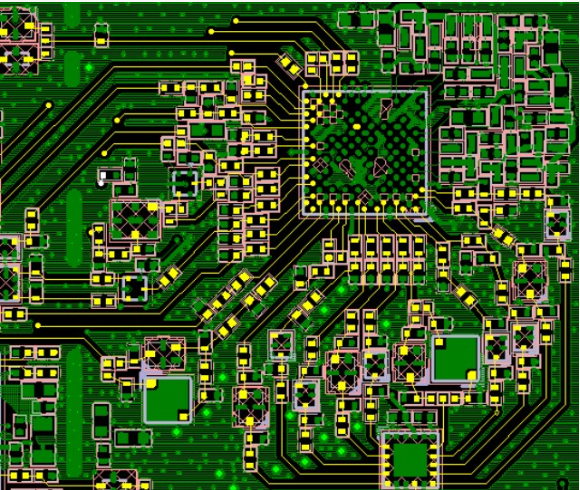This article mainly introduces the organic solder protection film (OSP) technology on printed circuit boards
OSP is the abbreviation of organic solder mask, also known as copper protective agent. English is also called Preflux. Simply put in English, OSP is coated with a layer of organic film on the clean bare copper surface, which has the functions of anti-oxidation, heat resistance, and moisture resistance. In order to prevent the copper surface from rusting (oxidized or vulcanized) in a normal environment, the protective film must be quickly removed at the subsequent welding high temperature. In this way, the exposed clean copper surface can be combined with the molten solder to form a strong solder joint in a very short time.
In fact, OSP is not a new technology. It actually has more than 35 years of history than SMT. The operating system has many advantages, such as good flatness, no IMC formation on the pad copper, and direct soldering of copper (wetting) during soldering. Low-cost (lower than HASL) processing energy use less, etc. OSP technology is very popular in Japan. About 40% of single panels use this technology, and nearly 30% of double panels use it. The US OSP technology has also soared from 10% in 1997 to 35% in 1999.

There are three kinds of materials for the operating system: Rosin, Active Resin and Methazole. At present, the most widely used is the prophazole operating system. The real OSP has been improved for about 5 generations and is called BTAIABIASBA and the latest APA.
The process flow of the PCB board operating system.
Degreasing-secondary washing, micro-etching-secondary washing-pickling-DI washing-film forming air drying-DI washing-drying.
Get oil.
The degreasing effect directly affects the quality of the film. If the degreasing effect is not good, the thickness of the film will not be uniform. On the one hand, the concentration can be controlled by analyzing the solution. On the other hand, if the oil removal effect is not good, the oil removal effect should be checked regularly.
2 Micro-etching.
The purpose of the slight etching is to make the rough copper surface easier to thin. The thickness of the micro-etching directly affects the film formation rate, forming a stable film thickness, and keeping the thickness of the micro-etching stable. In general, the thickness of the micro-etching should be controlled between 1.0~1.5μm. Before each shift, the micro-etching time can be determined according to the micro-etching rate..
3 membranes.
The washing before film formation is the famous DI water to prevent the film formation liquid from being contaminated. The washing after film formation is also famous for DI water, and the PH value should be controlled between 4.0≤7.0 to prevent the film from being polluted and damaged. The key to the operating system process is to control the thickness of the anti-oxidation glass. The high temperature resistance of the film (190°200°C) ultimately affects the soldering performance of the electronic assembly line. The film cannot be dissolved well in the auxiliary solder, which affects the soldering performance. Generally control the film thickness between 0.2~0.5μm.
The disadvantages of PCB OSP technology.
Of course, OSP also has its shortcomings, such as the diversity of actual formulas. In other words, the certification and selection of suppliers should be done well.
The disadvantage of OSP technology is that the protective film is very thin and easy to scratch (or bruise).
At the same time, the OSP film (the OSP film on the non-welded connection plate) that has been welded for many times at high temperature will change color or crack, which affects the welding performance and reliability.
The solder paste printing process should be good, because poorly printed boards cannot be cleaned with iPa, which will damage the operating system layer.
The thickness of the transparent and non-metal OSP layer is not easy to measure, and the transparency of the coating coverage is not easy to see, so the quality stability of PCB suppliers is difficult to evaluate.
There is no IMC isolation of other materials between the CU of the pad and the Sn of the solder. SNCU is growing rapidly in lead-free technology. Affect the reliability of welded joints.